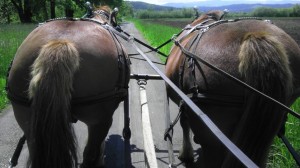With the many data breaches we’ve seen over the last year, people are concerned and they have a right to be. Taking just a few precautions, though, can really mitigate the impact these have on your pocket book.
- Check your credit card statement frequently. That’s easy to do online.
- Don’t use your debit card for purchases.
- If you don’t have any impending loans you wish to take out, think about freezing your credit. This can be easily done through each of the credit agencies’ websites. It prevents anyone other than you from taking out a loan in your name. Just remember, you need your password in order to unfreeze your credit when you do apply for a loan.
- Use long passwords with characters, numbers and letters in them. Change them once in awhile and don’t use the same one across multiple sites. That way if an account is hacked, none of the others will be.
Just like locking the doors on your home, these steps make your accounts unattractive to thieves. But none of this helps if you give them your keys. Thieves are always trying old-fashioned ways to get your information: stealing your postal mail or trying to get information from you over the phone. Protect your mail by using a locked mail box and picking up your mail daily. Don’t give information to callers you don’t know, no matter where they are from.
The phone scams are particularly stressing. The callers pretend to be the Microsoft Help Desk or the IRS or the State Department or a collection agency. The try to rattle you with some urgent emergency, telling you that you owe money or your computer has a virus or that your house will be seized. Don’t fall for it.
- Government agencies don’t call you. They send you real, paper letters.
- Microsoft will never call you. They have absolutely no way of knowing if you have a computer virus.
- Collection agencies have to adhere to a set of rules. Consult the Fair Debt Collection Practices Act. Along with the federal rules, each state has different guidelines, so check them out.
In any of these cases, don’t let them intimidate you into giving them any personal information of any kind, not even your name. A coworker of mine found that a “collection agency” was repeatedly calling company phones lines on the off chance that they could get someone to give them personal information. The “agency” didn’t have the name of who they were trying to contact, but they did have lots of questions. They were scammers.
My coworker did the right thing. She told them to stop calling, that this was a business line and that, since they didn’t know who they were trying to contact, they were not allowed to call back. They kept calling back, leaving messages in the company voice mail over and over. So, she sent all the recordings to Legal.
If this happens to you, know your rights. Consult the Fair Debt Collection Practices Act. Tell anyone trying to collect funds that they must submit it to you in writing. If they can’t or won’t, they are not legitimate. Don’t let scammers scare you.
One snail mail scam I keep receiving is a request to renew my magazine subscriptions. The scammers always use the same return address: PO Box 2489, White City, OR 97503-0489. If you get this request in the mail, round file it. If you aren’t sure about your subscription, just call your magazine to make sure it’s good. They sent me a renewal notice for the local paper, to the tune of $499.95. Um…no. It is less than a tenth of that. They’re getting stupidly greedy
Be careful out there…



